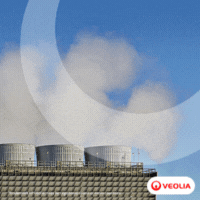Wheeling-Pittsburgh Announces 2004 Results
03/15/2005 - Wheeling-Pittsburgh Corp., the holding company of Wheeling-Pittsburgh Steel Corp., reported net income of $6.4 million on net sales of $373.7 million for the fourth quarter and net income of $62.5 million on net sales of $1.4 billion for the year ended December 31, 2004.
Wheeling-Pittsburgh Corp., the holding company of Wheeling-Pittsburgh Steel Corp., reported net income of $6.4 million on net sales of $373.7 million for the fourth quarter and net income of $62.5 million on net sales of $1.4 billion for the year ended December 31, 2004.
|
Fourth Quarter Results—Net income of $6.4 million ($0.46 per diluted share) compares with a net loss of $23.7 million ($2.49 per diluted share) in the fourth quarter of 2003, and net income of $35.6 million ($3.42 per diluted share) for the third quarter 2004. The company reported net sales $373.7 million on shipments of 503,000 tons of steel products. Steel prices averaged $743 per ton shipped, down slightly from the third quarter.
Cost of goods sold totaled $336.4 million for an average of $669 per ton shipped. Costs included maintenance spending for planned outages at the company's hot strip mill and finishing mills, as well as costs incurred during a 12-day period in December following a BOF ductwork collapse, during which there was minimal production. Raw material costs increased slightly above third quarter levels despite significantly less purchased coke in the fourth quarter.
Full Year Results—Net income of $62.5 million ($5.68 per diluted share) cannot be meaningfully compared with prior year results due to the company's reorganization on Aug. 1, 2003. The company recorded net sales of $1.4 billion on shipments of 2.1 million tons, with an average steel price per ton shipped of $661. Cost of goods sold totaled $1.2 billion, averaging $568 per ton shipped.
Comments—"Our strong financial performance in 2004 and successful secondary public stock offering significantly strengthened our liquidity as we entered 2005," said James G. Bradley, Chairman, President and CEO. "Additionally, production from our new Consteel(R) EAF, which began operation in the fourth quarter and is exceeding the manufacturer's production guarantee, is bringing about our transition to a hybrid steel producer."
The company is pursuing insurance recoveries for property damage related to the BOF ductwork collapse, for which a $2 million deductible was recorded in the fourth quarter. The impact of the collapse on fourth quarter earnings was $23 million, before the impact of profit sharing and VEBA. In addition, shipments in the first quarter of 2005 are expected to be negatively impacted by a further loss of 85,000 tons. A business interruption claim is being prepared which, after a separate deductible, is expected to be significant. No recognition was made in the fourth quarter for the anticipated recovery under the business interruption claim.
Outlook—Shipments for the first quarter 2005 are expected to be in the 500,000 to 515,000 ton range, and the average selling price is expected to be comparable with the fourth quarter. Cost of sales per ton in the first quarter 2005 is expected to be down slightly.
Wheeling-Pittsburgh is a steel company engaged in the making, processing and fabrication of steel and steel products using both integrated and electric arc furnace technology. Products include hot rolled and cold rolled sheet and coated products such as galvanized, pre-painted and tin mill sheet. Additional products include roll-formed corrugated roofing, roof deck, floor deck, bridgeform and other products used primarily by the construction, highway and agricultural markets.
The company emerged from bankruptcy pursuant to a plan of reorganization that became effective on August 1, 2003. Accordingly, for accounting purposes, consolidated financial statements for periods after August 1, 2003 related to a new reporting entity and comparisons to prior period performance in many respects are not directly comparable to prior periods of the old reporting entity. Among other changes, there have been substantial reductions in employment levels, changes in employee and retiree benefits, and the revaluation of assets and liabilities.



-(1)-Reinhausen-(1).jpg?lang=en-US&ext=.jpg)






